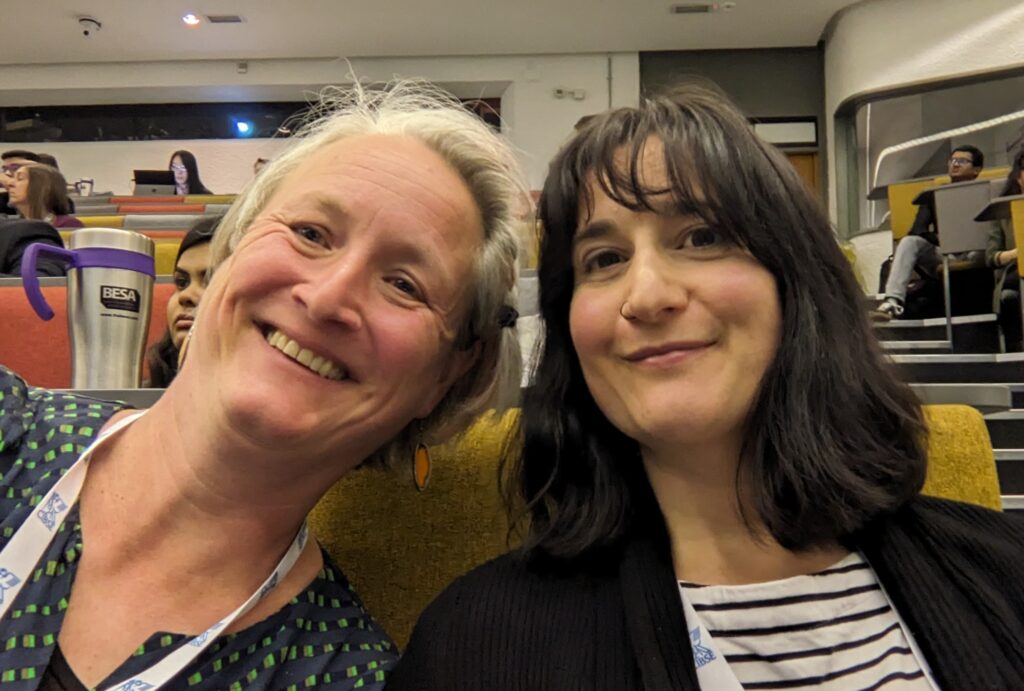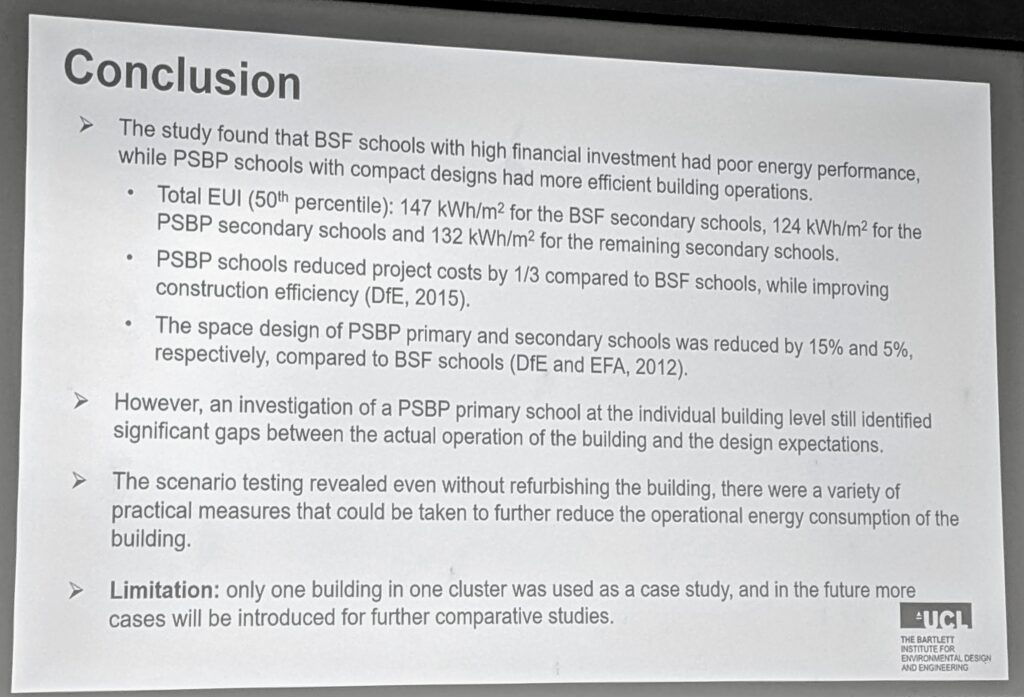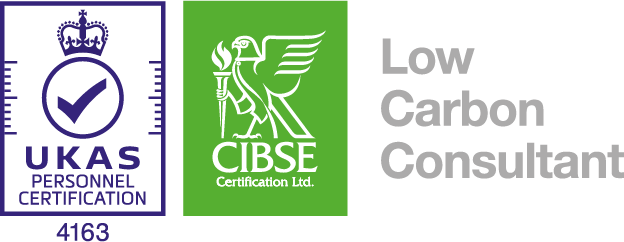CIBSE Technical Symposium 2025
This year the Technical Symposium was held at UCL in London on 24-25 April. For the first time it was a joint event with IBPSA (International Building Performance Simulation Association).

Claire and Susie attended the event for Inkling. We are big fans of the symposium so make an effort to attend every year, and have regularly submitted papers and been peer reviewers. You can read our write-ups from previous years here.
Here are our highlights from this year’s event:
Kicking off proceedings, Prof. Tadj Oreszczyn’s (UCL) keynote session on domestic energy ratings was one of the many sessions highlighting that the relative cost of gas and electricity per kWh (the ‘spark gap’) is disincentivising the transition to lower carbon technologies in the UK, which has the highest spark gap in Europe. In the case of domestic EPCs this means that heat pumps are not being recommended due to the cost metric used for EPCs (rather than a carbon or energy metric). A solution would be for the government to change the mechanism regulating the cost of electricity, which is currently linked to the wholesale gas cost. On a more positive note, the presentation noted that the UK housing stock may actually be performing better than we think because EPCs tend to overestimate energy usage.
Jack Harvie-Clark from Apex Acoustics covered the assessment of noise risk from domestic air source heat pumps (ASHPs). Generally ASHP installations fall under permitted development rights (PDR) but in some cases planning permission is required. PDR requires compliance with the recently updated MCS 020 Air Source Heat Pump Sound Calculation, which is based on distance from a neighbour’s nearest window and the position of any barriers. However if planning permission is required, a more involved assessment is required based on ISO 9613. Jack explained that the ISO 9613 model generally predicts much lower sound levels, indicating that the MCS calculation is an unnecessary constraint to the adoption of heat pumps under PDR.
Niloo Todeh-Kharman from Loughborough University is doing research on the impact of shading on a matched pair of houses. Unsurprisingly the findings so far are that adding shading decreases internal temperatures, but hopefully the longer study will provide more nuanced data on the relative effectiveness of different shading options (including yoghurt), and that these tests can also be modelled to test that the modelling packages are doing a good of reflecting these differences (we offered to help with this aspect).
Mariam Shehata from UCL/XCO2 discussed the benefits of utilising rice straw insulation products in Egypt. Rice straw is a byproduct of growing rice. The benefits include less burning of rice straw in the fields, and consequent air pollution, and good insulative and moisture buffering properties when processed into a building material.
Juan Fernandez from Cardiff University gave a detailed paper discussing matching energy consumption with PV yields, and dynamic grid carbon intensity. There are geographical and methodological differences in the dynamic carbon factors calculated for the grid. I’ve made a note to read this paper when they become available on the CIBSE website.
Jingxuan Yang from UCL presented evidence that schools built under the BSF (Building Schools for the Future) programme are performing less well than all other schools – including some much older ones. This sounds very concerning and the suggestion was that this cohort of schools included over complicated designs that school FMs had trouble operating efficiently in practice.

Day 2 opened with a talk from Ben Arnold from CIBSE with an encouraging presentation on his mission to ‘make CIBSE content and data accessible for a digital workforce’. His focus for this year is an on-line tool to help us estimate the embodied carbon in building services (following TM65), and to extend the database of CIBSE energy benchmarks with support from UCL. These both seem like excellent initiatives and we look forward to seeing them go live.
Mathieu Naccarato from Savills Earth gave a great presentation discussing life cycle analysis for MEP systems. Critical to this analysis is the frequency with which key equipment items need maintenance or replacement. I asked how well we are doing at monitoring in-use performance for MEP items in terms of reliability and lifespan, and it seems we are still reliant on manufacturer data rather than feedback from real buildings. It would be great if we could get Which or Trustpilot style data from FMs on which items perform consistently well in use and which they would prefer we stop specifying!
Alice Jackson from Hoare Lea followed on from Mathieu with another interesting presentation on the embodied carbon within MEP systems. She highlighted that electrical cabling can make up 25% of MEP embodied carbon (as it is comprised largely of materials that require energy intensive industrial processes to produce, such as copper and aluminium), and that MEP in their case study made up 18% of total building embodied carbon. She said that the more basic system level estimates have limited scope and can underestimate the actual carbon impact by up to 77%.
Efstratios Tsimpiridis from JAW presented an opinion paper proposing new occupancy profiles for use within TM59 calculations for student residential accommodation. Their proposals could be reasonable, but they are lacking any measured evidence to support them – can anyone help us find monitored occupancy and electricity use data for student bedrooms, kitchens and studios?
Ben Roberts from Loughborough and Ben Abel from Hilson Moran presented on the work on which we have been collaborating to explore modelled vs measured data for a new build flat in West London. They presented the blind stage results which have since been improved upon, which (to my mind) gave the impression that the discrepancies we saw in that specific case (no occupants or equipment gains, windows closed) would be present in all TM59 models. This isn’t the case as TM59 thresholds were calibrated on modelling results so include whatever discrepancies may exist within the modelling tools.
Xinyi Zhang from the University of Salford presented comparisons between SAP and the upcoming Home Energy Model (HEM) for a zero-carbon-ready home. An all-electric home with ASHP and mechanical heat recovery ventilation was modelled in both SAP 10.2 and HEM v0.28. HEM is still under development and uses the BS EN ISO 52016-1:2017 calculation procedures, which include the use of hourly weather data, detailed thermal bridges and multiple zones. It was found that HEM leads to a 24% increase in space heating energy, a 26% increase in solar gains and a slight reduction in domestic hot water energy. There was also a 187% increase in delivered energy. However this appears to be at least partly due to the fact that HEM considers both regulated and unregulated energy whereas SAP only considers regulated energy.
All the 2025 papers will shortly be available here.
Some broader thoughts:
While many papers we saw at the symposium this year were excellent, it did feel that, in some cases, quality was sacrificed for quantity. For example:
- Many papers showcased a project or a modelling case study without sharing any innovation or advice that might help to improve wider practice. It’s great that students are employing modelling techniques in academia but many appear to be a long way behind industry best practice. We suggest more students review the routine modelling assessments uploaded to planning portals to support applications to help them understand what is going into current industry modelling practice.
- A number of papers described in-house tools that are not being made available outside the organisation that has created them. This does not feel like it meets the peer review requirement for papers to be ‘free from commercialisation’ and we’d rather see a greater focus on resources that help support wider industry.
- Some papers lacked innovation, e.g. findings that a naturally ventilated building might significantly overheat under high emissions 2080 climate projections shouldn’t surprise anyone. We would again come back to whether this meets the objectives of the symposium to further knowledge and understanding.
Our impression was that the peer review process didn’t filter as effectively as it has in previous years. We love the symposium and hope that this is a temporary quality blip, or that we simply curated our attendance badly this year.
On the upside, we noticed many more papers stating their objectives and limitations more clearly this year which felt like a good thing.
Hopefully the event will have inspired others to submit papers for next year’s symposium which will be taking place at Loughborough University in April 2026.
 Posted by Susie Diamond
Posted by Susie Diamond- Posted in CIBSE, Events
 May, 08, 2025
May, 08, 2025 Comments Off on CIBSE Technical Symposium 2025
Comments Off on CIBSE Technical Symposium 2025

 Susie: 07972 263 676
Susie: 07972 263 676
 Join Us On In.com
Join Us On In.com

